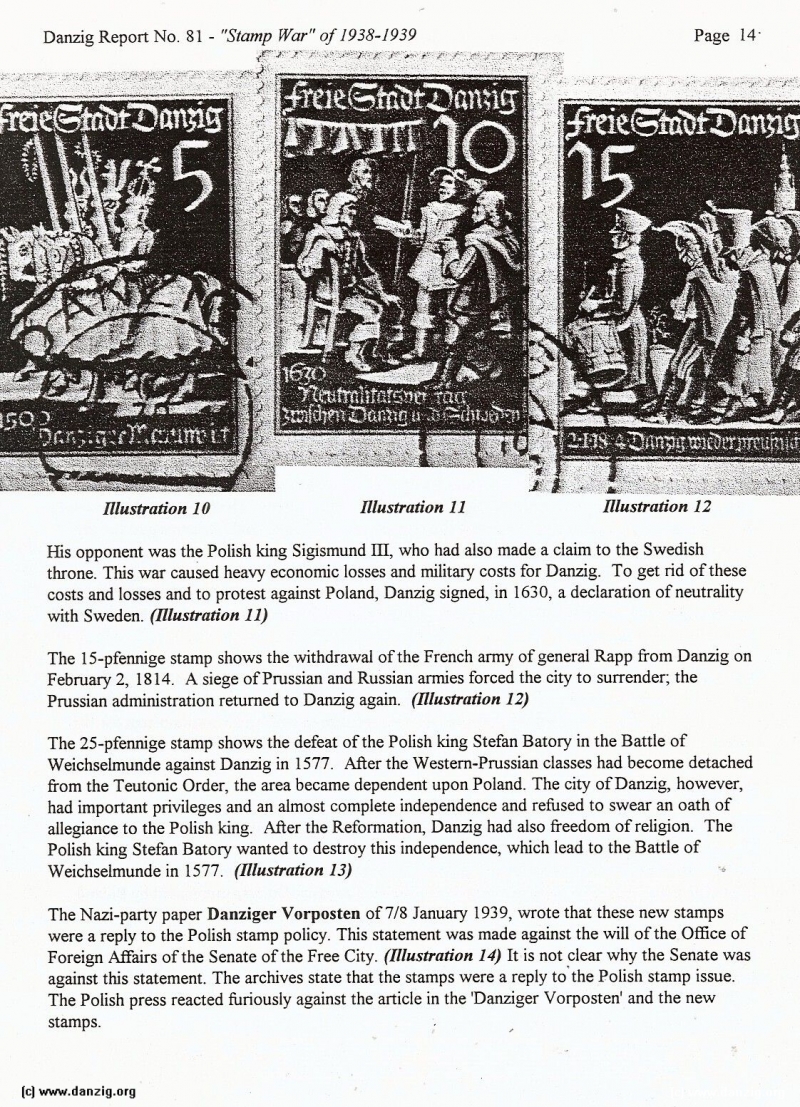
His opponent was the Polish king Sigismund III, who had also made a claim to the Swedish throne. This war caused heavy economic losses and military costs for Danzig. To get rid of these costs and losses and to protest against Poland, Danzig signed, in 1630, a declaration of neutrality with Sweden. (illustration 11)
The 15-pfennige stamp shows the withdrawal of the French army of general Rapp from Danzig on February 2, 1814. A siege of Prussian and Russian armies forced the city to surrender; the Prussian administration returned to Danzig again. (illustration 12)
The 25-pfennige stamp shows the defeat of the Polish king Stefan Batory in the Battle of Weichselmunde against Danzig in 1577. After the Western-Prussian classes had become detached from the Teutonic Order, the area became dependent upon Poland. The city of Danzig, however, had important privileges and an almost complete independence and refused to swear an oath of allegiance to the Polish king. After the Reformation, Danzig had also freedom of religion. The Polish king Stefan Batory wanted to destroy this independence, which lead to the Battle of Weichselmunde in 1577. (Illustration 13)
The Nazi-party paper Danziger Vorposten of 7/8 January 1939, wrote that these new stamps were a reply to the Polish stamp policy. This statement was made against the will of the Office of Foreign Affairs of the Senate of the Free City. (Illustration 14) It is not clear why the Senate was against this statement. The archives state that the stamps were a reply to the Polish stamp issue. The Polish press reacted furiously against the article in the ‘Danziger Vorposten’ and the new stamps.
Danzig Report Vol. 1 - Nr. 81 - October - November - December - 1993, Page 14.
Hits: 3245
Added: 06/07/2015
Copyright: 2025 Danzig.org

